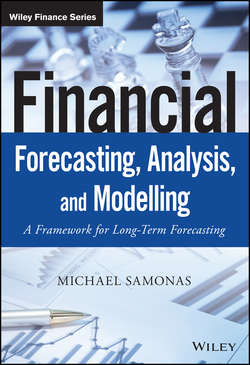Читать книгу Financial Forecasting, Analysis and Modelling - Michael Samonas - Страница 15
На сайте Литреса книга снята с продажи.
Part One
Developing Corporate Finance Models
Chapter 1
Introduction
1.4 EXCEL AS A TOOL OF MODELLING: CAPABILITIES AND LIMITATIONS
ОглавлениеMicrosoft Excel is the ideal tool for the kind of modelling covered in this book. Its immense popularity throughout the business world today for processing quantitative data and developing analytical solutions is widely acknowledged. One could argue that it is one of the most powerful and most important software applications of all time. It would not be an exaggeration to claim that if civilization were about to vanish and somebody could pass future generations a single wonder of our time, this should be Excel. Excel is everywhere you look in the business world – especially in areas where people are handling numbers, such as marketing, business development, sales, and finance. In a 2011 study, Weiser Mazars found that Excel was the favorite tool of insurance finance and accounting. Teams relied heavily on Excel to compensate for shortcomings in the information flow. Most leaders they questioned did not have plans to change this process. Moreover, they found that 87 % of companies rely on Excel in their planning, budgeting, and other performance management processes.12 In a different survey performed by gtnews during 2014 in relation to the technology that Financial Planning and Analysis (FP&A) professionals are using, almost three-quarters (73 %) of those surveyed indicated that Excel is still the primary tool they use in more than half of all their analytical work, even if they also have a standalone system.13
But while Excel is reasonably robust, the spreadsheets that people create with Excel are incredibly fragile. For starters, there is no way to trace where your data came from, there is no audit trail (so you can overtype numbers and not realize it), and there is no easy way to test spreadsheets. The biggest problem is that anyone can create Excel spreadsheets – badly. Because it's so easy to use, the creation of even important spreadsheets is not restricted to people who understand programming and do it in a methodical, well-documented way. That is why one should be aware of Excel's limitations. Tim Worstall, a Forbes contributor, proclaimed recently in a Forbes article that “Microsoft's Excel Might Be The Most Dangerous Software on the Planet” after JP Morgan's loss of several billion dollars due to a spreadsheet error.14 Moreover, a CFO.com article states that the error rates in spreadsheets are huge; Excel will dutifully average the wrong data right down the line and there's no protection against that.15 Finally, an article entitled “Beware of the Spreadsheet” appeared in the international edition of Accounting and Business, in which David Parmenter argued that the use of large spreadsheets for reporting, forecasting, and planning should be abandoned because of their susceptibility to errors.16 Excel is a tool and as such its use should be underpinned by proper controls as we mentioned earlier in this chapter.
In this direction both the Switzerland-based Basel Committee on Banking Supervision (BCBS) and the Financial Services Authority (FSA) in the UK have recently made it clear that when relying on manual processes, desktop applications, or key internal data flow systems such as spreadsheets, banks and insurers should have effective controls in place that are consistently applied to manage risks around incorrect, false, or even fraudulent data. The citation by the BCBS is the first time that spreadsheet management has ever been specifically referenced at such a high level, a watermark in the approach to spreadsheet risk.
Readers of this book should bear in mind that, although Excel is an incredible tool and without it we would not have had the incredible financialization of the world economy over the past 30 years, errors can easily happen while trying to model real life situations. Proper controls put in place can minimize possible errors and prevent wrong decisions.
